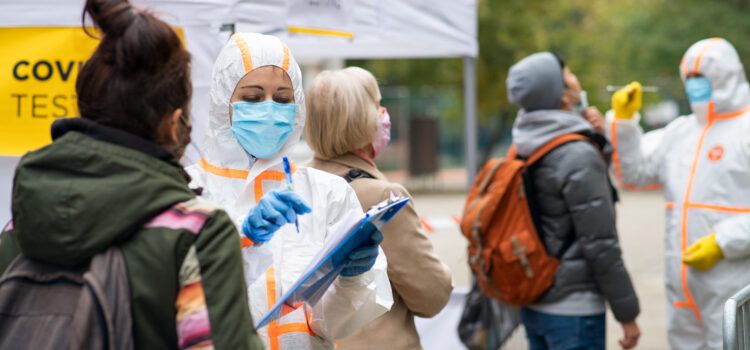
The Covid-19 pandemic will one day mark an era in our history books. The earliest recorded pandemic occurred in Athens, 430 B.C. Since then, the world has faced multiple pandemics, and surprisingly. Covid-19 is not the first pandemic of the 21st century.
It appeared in 2002 but identified in 2003. Severe Acute Respiratory Syndrome (SARS) was first discovered in Asia and would spread globally.
James Le Duc, PhD, the CDC’s influenza coordinator and director of the Division of Viral and Rickettsial Diseases in Atlanta, and M. Anita Barry, with the Boston Public Health Commission, wrote, “The 2003 outbreak of severe acute respiratory syndrome (SARS) shocked the world as it spread swiftly from continent to continent, resulting in >8,000 infections, with approximately 10% mortality, and a devastating effect on local and regional economies.”
Kern Sol News compares SARs to Covid-19 by three distinguishing factors.
1) Origins & Symptoms: It is important to note, both come from the same family of viruses, coronavirus. In Latin, corona means “crown.” Since they tend to have crown-like spikes, this is how the name is derived. They
have similar scientific names, displaying the connection between the two: SARS-CoV and SARS-CoV-2. Coronaviruses cause a range of respiratory illnesses, even the common cold or fever, but others can lead to severe conditions, like these.
Each originated from viruses that only affected animals, but have since “jumped” to humans and now can infect our species, too. They also share relatively similar symptoms. The CDC lists the following symptoms for each
virus.
SARS:
● Usually starts with a fever
● Headache
● Overall feeling of discomfort
● Body aches
● Diarrhea (10–20%)
● Cough and eventual Pneumonia
COVID-19:
● Fever or chills
● Cough
● Shortness of breath or difficulty breathing
● Fatigue
● Muscle or body aches
● Headache
● New loss of taste or smell
● Sore throat
● Congestion or runny nose
● Nausea or vomiting
● Diarrhea
2) Transmissions: Both viruses spread through person-to-person transmission by respiratory droplets. The new coronavirus SARS-CoV-2 is less fatal but more transmissible. An article from the peer-reviewed medical journal, Clinical Microbiology and Infection, showed “COVID-19 seems not to be very different from SARS regarding its clinical features.
However, it has a fatality rate of 2.3 percent, lower than that of SARS (9.5 percent).” Despite this, COVID-19 has far more cases due to its ability to
spread more easily through communities. CNN Health’s World Covid-19 Tracker reports that authorities in 219 countries and territories have reported about 102.1 million Covid‐19 cases and 2.2 million deaths.
Preventive measures are the same because of how it transmits between individuals. This means avoiding those who may be sick. The isolation and quarantine measures experienced today were not issued during the 2003 SARS outbreak, at least in the United States. Other countries more severely affected did have some individual quarantine as control measures.
3) Pandemic Duration: According to the CDC, the SARS outbreak lasted about six months, from February to July, 2003. More than 8,000 people were infected in 26 countries (in North America, South America, Europe,
and Asia), and 774 died.
On the other hand, the COVID-19 pandemic has already surpassed a year. With vaccines being distributed and administered, we must look at predictions from experts as to when the pandemic will end. Anthony Stephen Fauci is an American physician-scientist and immunologist
serving as the director of the National Institute of Allergy and Infectious Diseases since 1984 has been the chief medical advisor for seven presidents.
“Let’s say we get 75 percent, 80 percent of the population vaccinated,” Fauci said. “If we do that, if we do it efficiently enough over the second quarter of 2021, by the time we get to the end of the summer, i.e., the third quarter, we may actually have enough herd immunity protecting our society that as we get to the end of 2021, we can approach very much some degree of normality that is close to where we were before.”
The reality is that the end of the Covid-19 pandemic depends on guidelines set by government officials and how communities receive and/or follow this information.